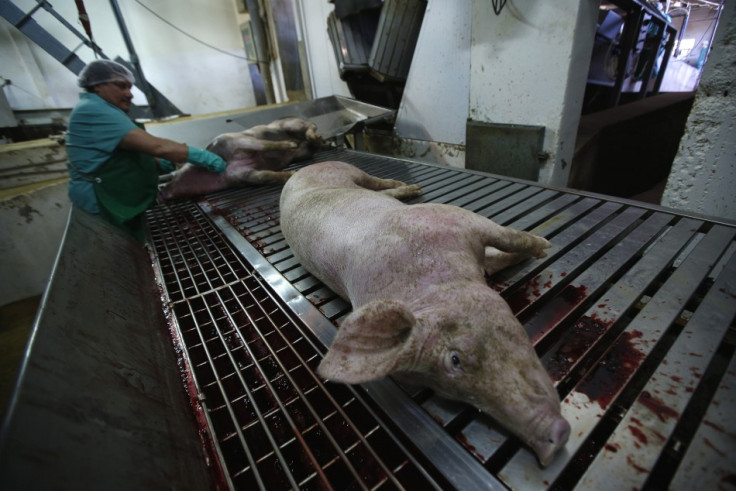China uses dogs and juvenile pigs as crash test dummies
A Chinese research institute crashed dogs and young pigs into walls at 30mph leaving the mangled animals dead or dying.
The Research Institute for Traffic Medicine, Daping Hospital in China has drawn criticism after engaging in cruel and unnecessary animal testing. Leaked images of adolescent pigs strapped to chairs being crashed into walls have sparked the controversy. The use of animals as crash test dummies ended in the United States back in 1993. With the advent of technology, the use of live animals for testing has been proven to be inaccurate.
Most of the tests conducted by the institute used pigs between the ages of 70 to 80 days. In various kinds of crash test conditions, the pigs and dogs were hit against walls. While seven of the young pigs died immediately from the injuries sustained, eight others suffered for hours before they died. After their deaths, the animals were dissected to complete the study.
Not only were the animals cruelly bashed to death or left dying from internal injuries, they have also been starved ahead of the tests. It was revealed that the animals were not given any food for 24 hours and were not given any water six hours prior to the tests.

In the United Kingdom, animal testing on pigs is primarily done to study animal diseases as well as human nervous and cardiovascular disorders. In the US, General Motors was the last company to use pigs as crash test dummies back in 1993. Pigs have a similar anatomy to humans. However, they are not close enough for the crash tests to be accurate.
People for the Ethical Treatment of Animals (PETA) campaigned for months to have General Motors stop the use of pigs for crash tests. It has launched a similar campaign to try and stop the barbaric and uncalled for deaths of more animals at the institute.
Researches from the institute told The Independent that they had used sedatives to calm the animals ahead of the tests. They justified the use of pigs, which were a few months old, by saying that the test simulated the body of six-year-old children.
Chris Magee, of the Understanding Animal Research group, felt that the tests were redundant. Most car companies used clinical human testing, 3D imaging and crash test mannequins fitted with equipment to understand the impact of crashes. Even the use of human cadavers yields more accurate results than testing on pigs and dogs.
© Copyright IBTimes 2025. All rights reserved.



















